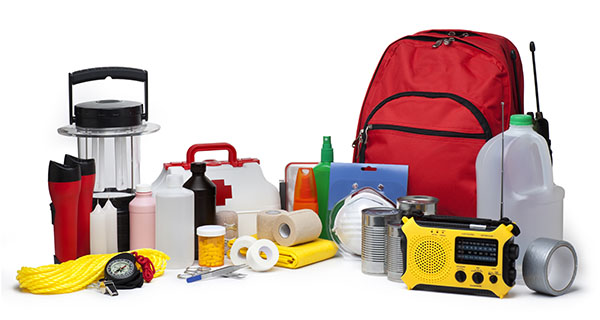

Part 2: Before a Flood
Adapted with the permission of The Regional Municipality of Halton.
Prevent flooding
Different types of flooding can occur in your home. The main types of residential flooding are:
- Overland flooding. The flood waters are usually clear and typically do not have any odour but should still be considered contaminated.
- Sewer backup. The flood waters will be greyish in colour and typically have an odour.
- A combination of both.
Reduce the risk before flooding happens
Ensure good drainage around your home:
- Make sure that the ground slopes away from your exterior walls.
- Direct the flow from downspouts at least two meters away from your home.
- Downspouts, sump pumps, window well drains and driveway drains should usually be disconnected from the wastewater system. Consult your municipality on whether your system is properly designed.
- Weeping tiles and foundation drains should usually be disconnected from the wastewater system (consult your municipality on whether it is properly designed), and install an autoatic sump pump with battery backup power. (Note: you may need an inspection from your Town or City to ensure the overflow is discharging to an appropriate area).
- Regularly check for and fix leaks in walls, floors, windows and foundation.
- Clean leaves and other debris from eaves troughs and downspouts to ensure proper drainage.
Understand and maintain your home plumbing system:
- Install a backwater valve on the wastewater (sanitary) pipe inside the basement.
- Regularly inspect and maintain your home’s flood-prevention devices (i.e., backwater valves, sump pumps, floor drains).
- Have a drainage contractor visit your home to inspect your lateral pipe with a Closed Circuit TV (CCTV). The lateral pipe is the pipe that takes wastewater away from your home. If you have a history of tree root blockages in the lateral, consider hiring a lining professional to re-line the pipe to prevent future blockages.
Avoid clogging your drains:
- Never pour kitchen grease, fats or oils into your house drains. They could solidify in your plumbing system.
- Don’t wash solids, like bits of food, down the drain.
- Although convenience items such as baby wipes are sometimes labelled as flushable, they commonly cause blockages in the sewer.
Plan for emergencies
Know the risks, make a plan, get a kit
Are you prepared? Emergencies can happen at any time and your best defence is to be prepared.
A few key steps you can take to reduce the impact of a flood:
- Do not store your important documents in the basement. Keep them at a higher level, protected from flood damage.
- Keep floor drains clear of obstructions.
- If you live in an area that is prone to flooding, hire a professional to elevate the furnace, water heater and electric panel in your home.
Know the risks
Wellington and Dufferin Counties are vulnerable to a variety of natural and human-caused hazards. Make sure you and your family members know what the hazards and risks are in the area you live. Even if you feel your community has a low risk of flooding, remember that anywhere it rains, it can flood. Just because you have not experienced a flood in the past, does not mean you will not in the future.
Make a plan
- Make sure everyone in your family knows what to do before, during and after an emergency such as a flood. Hold a family meeting to discuss and create a family plan for emergencies.
- If you live alone, develop a plan for yourself with links to neighbours and friends.
- Keep a copy of your plan in a safe place, such as your 72-Hour Emergency Kit. Photocopy your plan and keep it in your car and/or at work.
- Learn more about building a plan at the Government of Canada Get Prepared website.
Get a kit
Assemble a 72-Hour Emergency Kit to use during an evacuation of your home or community. Make sure everyone living in the home knows where to find the kit. See what’s included in a kit at Get Prepared.
To prepare for a flood, you may want to include some additional protective equipment in your Kit including:
- Protective clothing to fully cover skin
- Hard hat
- Gloves
- Masks
- Protective eyewear
- Rubber boots (puncture-proof and waterproof are best)
Always have your mobile phone charged and in a location that makes it easy to grab if you must evacuate your home.

Insurance
Water-related damage from a flood can be extensive and repairs could be very expensive. According to the Insurance Bureau of Canada (IBC), increasingly severe weather means that basement flooding and water damage are becoming more common. See the IBC’s guide to residential water damage and flood insurance and more tips on preventing flooding (PDF).
Review your insurance coverage every year with your insurance representative and make sure you understand what is covered and what is not.
If you do experience flood damage, you will need to provide a list of lost or damaged items as part of your insurance claim. Review your insurance policy so you understand what items to list and before flooding happens, create a household inventory list (or video).
